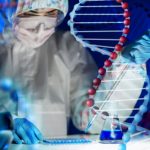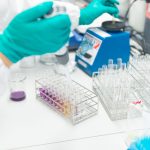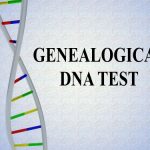DNA Evidence is Not as Reliable as Many Believe it to Be

TV-shows like CSI and Bones, have seared in the public consciousness the image of the faultless crime fighting forensic scientist and infallibility of DNA evidence.
But the reality is that DNA evidence is not what many believe it to be – it is, in fact, susceptible to human errors including botched testing, bias and even misconduct by testers and those issuing ‘expert certificates’ – who are often current or former police force employees, as well as misinterpretation by juries, judges and lawyers alike.
Indeed, there have been numerous cases of ostensibly indisputable DNA evidence falsely connecting innocent people to crimes.
A common problem is the “prosecutor’s fallacy”, which is an error of interpretation that routinely occurs DNA evidence is presented in court. It is a situation which presents a danger of unfair prejudice against defendants, who may be convicted on a misconception that the evidence is more powerful and probative than it really is.
This article seeks to outline the nature of DNA evidence, including what counts as “match” and why the “prosecutor’s fallacy” can have a major impact on the outcomes of criminal cases.
What is forensic DNA analysis?
Forensic DNA analysis is a scientific tool which exploits the uniqueness of deoxyribonucleic acid (DNA): a complex chemical found in the nuclei of all cells of the human body, except red blood cells.
DNA is our “genetic blueprint” being responsible for our chemical and physical characteristics. Each person’s DNA remains the same throughout their lifetime and, with exception of identical twins, is unique to each individual.
DNA can be found in most biological material including blood, saliva, semen and hair. DNA can even be found in the skill cells left when a person touches or sheds skin near an object (called “touch DNA”).
Forensic DNA analysis is commonly used in criminal trials to:
- Identify suspects or victims of a crime by comparing their DNA to samples found at a crime scene.
- Exclude suspects by demonstrating that their DNA does not match samples found at a crime scene.
- Link suspects or victims to other crimes by comparing DNA samples from different crime scenes.
- Identify human remains.
What is a DNA “match”?
If biological material taken from a crime scene or a victim is linked to a suspect, you will often see it is called a “match”.
What counts as a “match” is much more complicated than it may seem.
Contrary to popular belief, DNA profiling does not involve sequencing the entirety of the genome left at a scene. Instead, DNA analysts look at certain sections of the DNA strands known to vary greatly between individuals called “Short Tandem Repeats” (or STRs).
STRs are sections of the DNA molecule where base pairs (the building blocks of DNA) repeat around 2-7 times. STR sections are sometimes referred to as “non-coding DNA” or “junk DNA” because they serve no purpose in the functioning of a cell.
As not all of the DNA is known, forensic analysts must report on the odds of highly variable STR sections being the same in two individuals.
One way that they do this is via a “random match probability”. Random match probability is an estimate of the chance that a person’s DNA profile would match another DNA profile based on the normal variation of STR sections in the population. This is done by comparing how rare this particular combination of STR sections are in a particular population (drawing on population databases divided by ethnicity, so for example, “the Australian Caucasian population”).
As STR markers are so variant within populations, and given standard DNA profiles look at around nine highly variable locations in a typical analysis, the odds generated from this analysis are usually quite high.
For example, the chance of a second person selected at random from the Australian Caucasian population having the same DNA profile as that of the major component of DNA in the sample is expected to be one in 180 billion (with a range of one in 10 billion to one in 2.3 trillion).
Another way of describing the comparison of DNA profile is to calculate the odds of two competing hypothesis, known a likelihood ratio – again drawing on established estimates of the variability of certain STR markers within subpopulations. For example:
- Hypothesis 1 (H1): the major component of DNA obtained at the scene originated from the suspect.
- Hypothesis 2 (H2): the major component of DNA obtained at the scene, originated from some other person chosen at random from the Australian Causation population.
A likelihood ratio could be generated by calculating: “the probability of Hypothesis 1” / “the probability of Hypothesis 2”.
If the likelihood ratio is greater than one, the evidence supports Hypothesis 1 (which is also sometimes called “the prosecution hypothesis”) and if it is less than 1, it supports Hypothesis 2 (sometimes called “the defence hypothesis”).
Again, because of the high variability of STR markers, it’s not uncommon to read likelihood ratio results of > 150 billion in forensic reports.
What is the “prosecutor’s fallacy”?
The prosecutor’s fallacy is a logical error that occurs when a prosecutor (or a member of the public) incorrectly interprets the “match” statistics given by forensic scientists with the likelihood of guilt.
An example of the prosecutor’s fallacy in practice, would be a prosecutor telling the jury:
The forensic expert said that it is 500 million times more likely that the DNA left at the scene belonged to the defendant than a random person. This means that it’s 500 millions time more likely that the defendant killed the victim, rather than a complete stranger.
As should be clear, this statement above confuses two different concepts: the probability of a certain DNA profile being left by the defendant and the probability that the defendant is guilty.
There are many innocent explanations as to why a person’s DNA may be left at a crime scene or on a victim. The simplest being that they had some contact with the scene or the person prior to the crime being committed.
Forensic DNA evidence can’t tell you why DNA is present on a sample, it can only give estimates as to the potential source of the DNA profile.
DNA evidence, on its own, is rarely sufficient to prove a case beyond reasonable doubt. Indeed, the presence of a defendant’s DNA at a scene without any eyewitness or circumstantial evidence is often a key indication of a miscarriage of justice.
When DNA Evidence Goes Wrong
An example of overreliance on DNA evidence in the absence of other evidence was demonstrated in the Victorian case of Farah Jama.
19-year-old Farah Jama was prosecuted and convicted of the rape of a 28-year-old women in 2005, who woke up in a Melbourne nightclub with no recollection of what happened to her.
The alleged victim was examined by a Sexual Assault Crisis Care Unit within a hospital for a physical examination. Routine swabs were taken and sent to the Victoria Police Forensic Science Laboratory for DNA analysis. The lab results came back with a “match” for Farah Jama.
When questioned by police, Jama insisted he was at his father’s bedside on the night of the assault. Moreover, no eyewitnesses on the night– which was filled with middle-aged Caucasian people – could recall seeing a young, very tall African man at the nightclub.
After serving nearly two years in prison, and on the insistence of a lawyer who took the case pro-bono, prosecutors eventually reviewed the DNA evidence which was used to convict Jama.
They discovered that Jama’s DNA had mistakenly been identified as coming from the alleged victim of the nightclub assault, when it had in-fact come from an unrelated matter the day before.
Indeed, no viable DNA was found on the alleged assault victim.
On December 7 2009 the Victorian Court of Appeal acquitted Jama of the rape conviction on the basis of this lab error.






